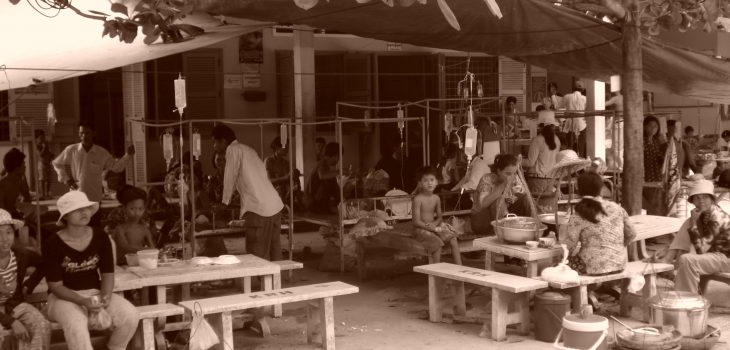By Augustine Asante, Ir Por, Bart Jacobs and Virginia Wiseman
Universal health coverage (UHC) appears to be on everybody’s agenda these days, especially low- and middle- income countries (LIMCs). But achieving UHC goes beyond having it on one’s agenda; it requires, among other things, an equitable health financing system that ensures the benefits from health financing are distributed on the basis of need, and the burden of paying for health care is shared according to ability-to-pay. Such financing systems must also offer adequate protection against the risk of health payments. Many LMICs have undertaken significant reforms in the last decade to strengthen their health financing systems to improve equity and accelerate progress towards UHC. But have these reforms moved the countries any closer to UHC? A new supplement in Health Policy and Planning provides evidence on the equity impact of health financing reforms in three countries in the lower-Mekong region of Southeast Asia – Cambodia, Lao PDR and Myanmar. The countries, though different in many aspects, have much in common: recently attained lower-middle income status, fast growing economies, history of armed conflict and civil strife, and health systems that are among the weakest in the region.
What can we learn from this supplement?
The four papers in the supplement together demonstrate that while progress has been made, a lot of work remains to be done for UHC to become a reality in these three lower-Mekong countries. The major hurdles yet to be overcome include limited financial risk protection; high utilisation of private health facilities by the poor; and the frequent borrowing and selling of household assets to cope with high out-of-pocket (OOP) expenditure.
Despite efforts to protect the population against excessive health care costs, the level of financial risk protection currently offered to the poor and other vulnerable groups in these countries is insufficient to achieve the goal of UHC. A large proportion of the population in all the countries still incur high OOP costs when accessing health care. The existing social protection schemes are not comprehensive enough to offer the financial protection people need when accessing health care. In the absence of a sufficiently funded high-performing public health system and relatively weak health governance, the private sector has flourished in these countries. Although the private health sector is loosely regulated, they are still deemed more responsive to patient needs than the public sector, especially in Cambodia and Myanmar, and therefore account for a large proportion of service utilisation. Most of the OOP spending consequently occurs in the private health sector, often triggered through supplier-induced demand, despite concerns about quality.
A key consequence of the high OOP costs and limited financial risk protection in the three countries is harmful coping mechanisms like borrowing and selling household assets to pay for health care. This phenomenon is encouraged by the easy access to finance from private financial institutions. In Cambodia, for example, loans are easily accessible from numerous banks and microfinance institutions, hence, it is not uncommon for people to borrow just to pay the interest on outstanding loans. In Lao PDR and Myanmar a substantial proportion of people forego care.
Overall, this supplement reminds us that without adequate focus on equity, it may be some time before the benefits of UHC trickle down to everyone. It is paramount that as countries focus on expanding coverage, the poor and vulnerable – who are often the most difficult to reach – are not left behind.
Articles in this supplement
Editorial: Transforming health systems financing in Lower Mekong: making sure the poor are not left behind
Article: Who benefits from health care spending in Cambodia? Evidence for a universal health coverage policy.
Article: Financial protection and equity of access to health services with the Free Maternal and Child Health Initiative in Lao PDR
Article: Exploring the determinants of distress health financing in Cambodia: results from a cross-sectional survey
Article: A new hope: from neglect of the health sector to aspirations for Universal Health Coverage in Myanmar
Image credit: Bart Jacobs











